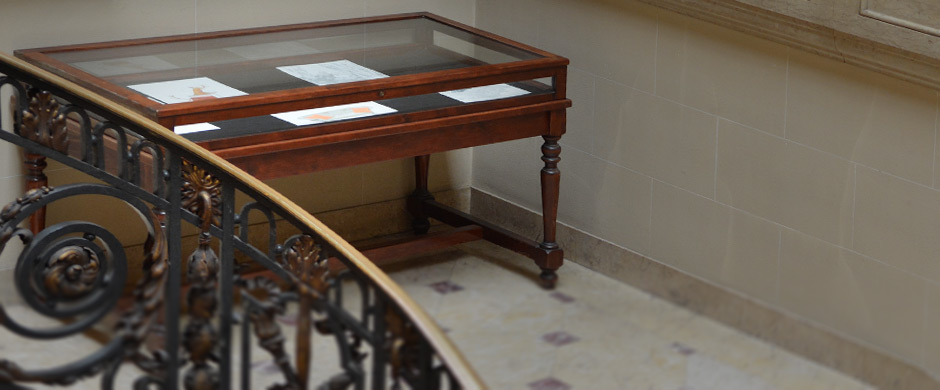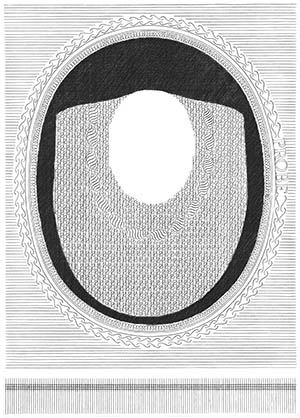 | On Display
| On Display

Display Cases in the Great Hall: Exhibition Archive
ORNAMENTATIONS
28 October, 2017 to 8 January, 2018
Copper Plate Engravings by ANTON WÜRTH
 Anton Würth’s design elements emerge from what inspires him: old master engravings. Würth invites us to experience a seventeenth-century Kunstkammer, where erudite collectors, aristocrats, and intellectuals pored over intricate ideas. Würth studies engravings like those of Robert Nanteuil (1623-1678) and experiments with techniques learned through research. By removing central compositional elements of a portrait, for example, or a landscape design, Würth focuses on support structures. Elements of whimsy and playfulness emerge in the lyrical lines of his own engravings, forming compositions that allude to the old masters, and derive from years of subtle and determined practice.
Anton Würth’s design elements emerge from what inspires him: old master engravings. Würth invites us to experience a seventeenth-century Kunstkammer, where erudite collectors, aristocrats, and intellectuals pored over intricate ideas. Würth studies engravings like those of Robert Nanteuil (1623-1678) and experiments with techniques learned through research. By removing central compositional elements of a portrait, for example, or a landscape design, Würth focuses on support structures. Elements of whimsy and playfulness emerge in the lyrical lines of his own engravings, forming compositions that allude to the old masters, and derive from years of subtle and determined practice.
Louis XIV appointed Robert Nanteuil to a royal post as designer and engraver after a 1652 portrait engraving of Cardinal Mazarin caught his attention. In 1678, the artist published thoughts regarding manual work: the engraver begins as a draftsman and moves on to become engraver and sculptor. Hold the burin a certain way to make an interrupted fold, or reveal overlapping fabrics. Nanteuil wrote how desired shapes or effects determine the artist’s strokes and hatchings, and how respect for reserved paper should drive an engraver’s thinking about dense layered lines. He stressed “verve” rather than strength in the quality of an engraver’s lines.
Anton Würth embodies these instructions in his work, sharing energy and movement in his lines. He analyzes phrases in Nanteuil’s instructions and then extracts forms to create a new visual language of abstract ornamentation and design. Würth’s engravings translate Nanteuil portraits into studies using symbolic language to comment on identity. Louis XIV becomes an oval study, where the face is absent, yet wreathed in laurels. The king’s flowing wig lies atop an elaborate lace scarf, flowing onto armor-clad shoulders. Fleurs-de-lis adorning corners become daisies in Würth’s extractions. Larger prints reveal how devices become elements of compositional interest. Eighteenth-century garden designs, interpreted in Würth’s engravings, examine how rows of trees become circles, plants atop earthen mounds become linear flourishes. Patterning and repetition, classic elements of composition, become elegant, elusive lines and symbols in Würth’s new language; à la fois straightforward, nuanced, and utterly subtle.
Curated by Lisa A. Banner
Courtesy of the Artist and C.G. Boerner
Contact the Institute
Building Hours
Contact Information
If you wish to receive information on our upcoming events, please subscribe to our mailing list.



